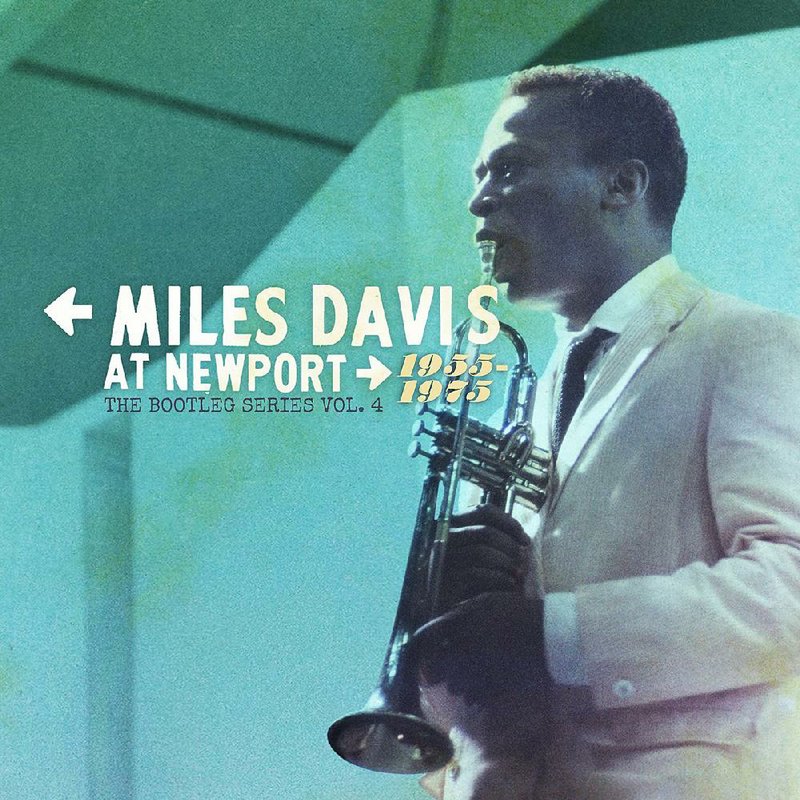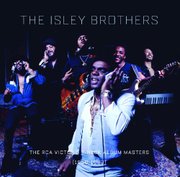Newport, R.I., might have saved Miles Davis. Or given him a opportunity to save himself.
On July 17, 1955, a 29-year-old Davis, during an intermission set at the Newport Jazz Festival, joined a quintet led by Thelonious Monk for three tunes: Monk's "Hackensack," Charlie Parker's "Now's the Time" (Parker had died four months earlier) and Monk's "'Round Midnight." On the last tune, Davis took a solo with his trumpet so close to the microphone it was almost inside the bell.
"The clarity of his sound pierced the air over Newport's Freebody Park like nothing else we heard onstage that year. It was electrifying for the audience out there on the grass, the musicians backstage and the critics -- some of whom had opined that Miles' career was already over," festival founder George Wein wrote in his autobiography Myself Among Others: A Life in Music.
Wein recalled that Davis hadn't been initially invited to the festival -- he didn't even have his own band at the time. When Wein ran into him at a New York jazz club a few weeks before the festival, Davis pleaded to be added to the program: "You can't have the festival without me."
So Wein squeezed him into the jam session with Monk and saxophonists Zoot Sims and Gerry Mulligan. Davis was determined to stand out. He wore a white tuxedo and took aggressive command of "'Round Midnight," irritating Monk. But the performance earned him a standing ovation and the renewed respect of Columbia Records jazz producer George Avakian, who had written Davis off as a heroin casualty. (While playing with Parker in the 1940s, Davis developed the quintessential jazzman's addiction.)
Avakian signed Davis to a recording contract in October 1955 while he was still under contract to Prestige. Avakian negotiated a deal with Prestige owner Bob Weinstock that allowed Davis to begin recording for Columbia immediately, with the stipulation that they wouldn't release any material until Davis had satisfied his contractual obligations (he owed Prestige four albums).
Davis' relationship with Columbia would change the trajectory of jazz and yield classic albums such as Kind of Blue (1959), Sketches of Spain (1960) and Bitches Brew (1970). Davis' mutually beneficial relationship with the Newport Jazz Festival would last even longer.
Released in July, the four-CD Miles Davis at Newport 1955-1975: The Bootleg Series Vol. 4 (Columbia/Legacy, $49.98) documents Davis' history with the festival with eight live performances at Newport and spinoff events at New York's Lincoln Center, Berlin and Switzerland. A handsome set with liner notes by the Grammy Award-winning music historian Ashley Kahn, the set features six of Davis' groups in live performances in 1955, 1958, 1966, 1967, 1969, 1971, 1973 and 1975.
While Davis' career-salvaging initial performance at Newport has been released before, hearing it in this context is eye-opening. Davis seems almost tentative at the beginning, as though he's looking for a way into the mix. But he takes charge on "'Round Midnight," wresting control of the pickup group away from its putative leader. No wonder Monk was perturbed.
Davis returned to Newport in 1958 with John Coltrane (tenor sax), Cannonball Adderley (alto sax), Bill Evans (piano), Paul Chambers (bass) and Jimmy Cobb (drums) -- the lineup that in a few months would record Kind of Blue. But the Newport performance (previously released on 2001's At Newport 1958) doesn't hint of the cool modal flow to come. Instead, the band bears into hard-bop versions of "Ah-Leu-Cha" and "Straight, No Chaser" with Coltrane's "sheets of sound" attack swamping individual notes and Cobb's kit reporting like .45s. It wraps up with an exquisitely melodic, swinging version of "Bye Bye Blackbird."
The second disc features previously unreleased 1966 material by Davis' remarkably elastic second classic quintet -- Wayne Shorter (tenor sax), Herbie Hancock (piano), Tony Williams (drums) and Ron Carter (bass). The third disc finds Davis in fusion mode. There's a 1969 performance with the core musicians who would make Bitches Brew -- Chick Corea (piano), Dave Holland (bass) and Jack DeJohnette (drums) -- that was previously released a few years ago on an expanded edition of Bitches Brew. This is followed by a 1973 performance from the Newport Jazz Festival Berlin. While marred by poor sound, it is notable for the electric guitars of Pete Cosey and Reggie Lucas and the intimations of funk to come. This mode is continued in the 1975 Newport Festival set, which took place in New York a few months before Davis' temporary retirement.
The final disc consists of a 1971 performance -- it's presented out of chronological order from the Newport Jazz Festival Switzerland -- featuring saxophonist Gary Bartz, pianist Keith Jarrett, bassist Michael Henderson, drummer Leon Chancler and percussionists Don Alias and Mtume. This is the electrified space funk Davis, and in retrospect it is, like the rest of the set, more interesting than indispensable.
Nevertheless, like most of the Bootleg offerings (Bob Dylan is the other artist who has been given Columbia's prestige artist boutique treatment), the set is handsome and likely to prove valuable to anyone interested in the evolution of Davis or modern jazz. Completists will have to have it for the unreleased material, although they probably already own the most important stuff. With the possible exception of Elvis Presley, Davis, who died in 1991, has had the most fruitful posthumous career of any American recording artist. And the vaults aren't empty yet.
BROTHER, BROTHER, BROTHER
The Isley Brothers, The Isley Brothers: The RCA Victor and T-Neck Album Masters (1959-1983) (Legacy, $139.99)
A few rock artists -- thanks primarily to the cultural hegemony of the baby boom generation -- have enjoyed 40-year-plus careers, but the arc of a pop career is usually parabolic and brief. The public appetite for novelty is as strong as its attention span is short. You have your 15 minutes, your hit single, then you bow and graciously fade away. Maybe you do a few oldies shows, smiling over your expanded waistline, but you do it with your tongue in your cheek lest you risk looking ridiculous.
Groups are even less durable than individual artists. The Beatles had eight years, Creedence Clearwater Revival a good three. The Rolling Stones are still around, but one could argue that they haven't really been the Rolling Stones for 30 years or more. Pop longevity is a dubious concept; longevity implies compromises have been made and formulas established. Hang around long enough, enjoy enough success and no matter how rebellious and cutting-edge you may have been, you are absorbed into the mainstream. It's a problem all rock bands struggle with -- how do you maintain credibility when you're living in big hotels, estranged from the street?
Maybe it helps if, like the Isley Brothers, you never get too big.
The bold-faced icons of soul are Aretha Franklin, Ray Charles, Marvin Gaye, Sam Cooke and maybe Otis Redding. The Isleys are seldom included in the first rank, though they remain as vital today as when they hit their stride almost 50 years ago.
They've had a multitude of hits, placing more than 50 songs on the R&B charts between 1969 and 1988. They influenced the Beatles -- compare their gospel-charged version of "Twist and Shout" to the Fab Four's take -- had their tracks sampled by hundreds of hip-hop artists, been inducted (in 1992) into the Rock and Roll Hall of Fame, yet they've been able to escape the kind of immobilizing veneration that accompanies legendhood. They've never quite become icons, possibly because they were too dangerous, too slippery, too black to ever host a variety show or be converted into Saturday morning cartoon characters. Long before "keeping it real" became a rapper's mantra, that's what the Isleys were about.
Growing up in a middle-class suburban black neighborhood called Lincoln Heights outside Cincinnati, the brothers began their career singing in downtown Cincinnati's First Baptist Church where their mother, Sallye Bernice, served as organist, pianist and choir director. Originally the group consisted of brothers Ronald, Rudolph, O'Kelly and Vernon, and soon they were making appearances in churches around the area. In 1954, Vernon was killed when a car struck him while he was riding his bicycle in Lincoln Heights. The brothers stopped performing for a while, but at the insistence of their parents, they eventually re-formed and, in 1956, left for New York to record doo-wop for the Teenage, Cindy and Mark X labels, but none of these ever clicked.
In 1959, they moved to RCA and recorded their first hit with Sam Cooke's production team -- Hugo Peretti and Luigi Creatore -- at the controls. "Shout!" was a smash in the black community, and it peaked at No. 47 on the pop charts. RCA was unable to record a suitable follow-up until it matched the group up with producer Bert Berns in 1962. That teaming resulted in "Twist and Shout" in 1962. However, when RCA pressured them to record a song called "Surf and Shout," the Isleys responded by forming their own record label, T-Neck. They hired Jimi Hendrix to play lead guitar. (Hendrix moved into the Isley household, which had been moved from Lincoln Heights to Englewood, N.J.)
Yet while the formation of T-Neck gave the brothers artistic control, they never managed to crack the charts on their own. So they jumped at an offer to join Motown in 1965. Despite producing a couple of hits --"This Old Heart of Mine" and "Take Me In Your Arms (Rock Me a Little While)" written by Motown's in-house geniuses Brian and Eddie Holland and Lamont Dozier -- the Isleys were never a comfortable fit at Hitsville, USA.
In 1969, the Isleys restarted their T-Neck label and began a period of incredible productivity. They exchanged their Temptations/Four Tops- style mohair suits for funkier threads. They expanded the band to include younger brothers Ernie (on, primarily, drums and guitar) and Marvin (bass), along with Rudolph's keyboardist brother-in-law, Chris Jasper, making the Isley Brothers one of the first self-contained black bands. The Isleys' sound and material changed -- music and lyrics both got tougher, tighter and less sweet.
The 1969 album It's Our Thing featured the Grammy-winning single "It's Your Thing." But their next effort, 3 + 3, was an instant classic that codified the brothers' sound. From 1973 to 1983 the Isley Brothers scored nine consecutive gold or platinum albums.
The Isley Brothers: The RCA Victor and T-Neck Album Masters (1959-1983) is a massive (23-CD) boxed set that includes newly remastered versions of 21 Isley Brothers albums, plus 84 rare and previously unreleased tracks, including the "great, lost" Wild in Woodstock: The Isley Brothers Live at Bearsville Sound Studio 1980, a live studio double album newly restored.
Email:
pmartin@arkansasonline.com
blooddirtangels.com
Style on 08/16/2015

